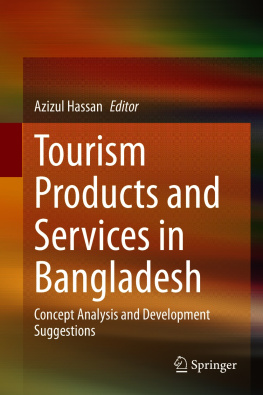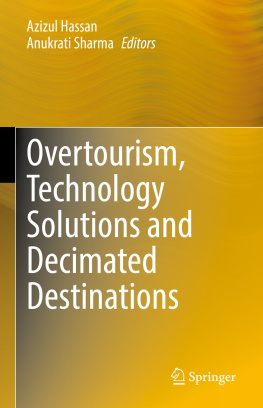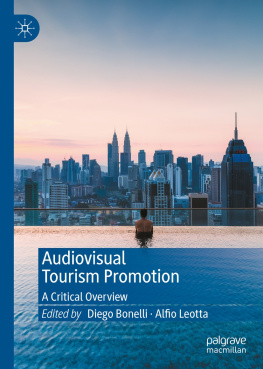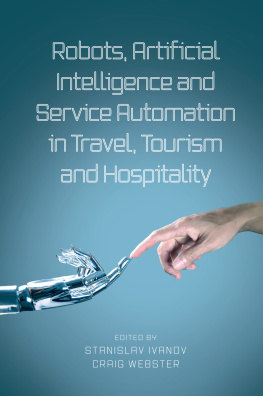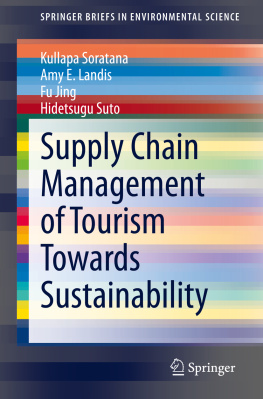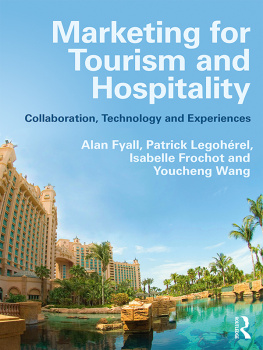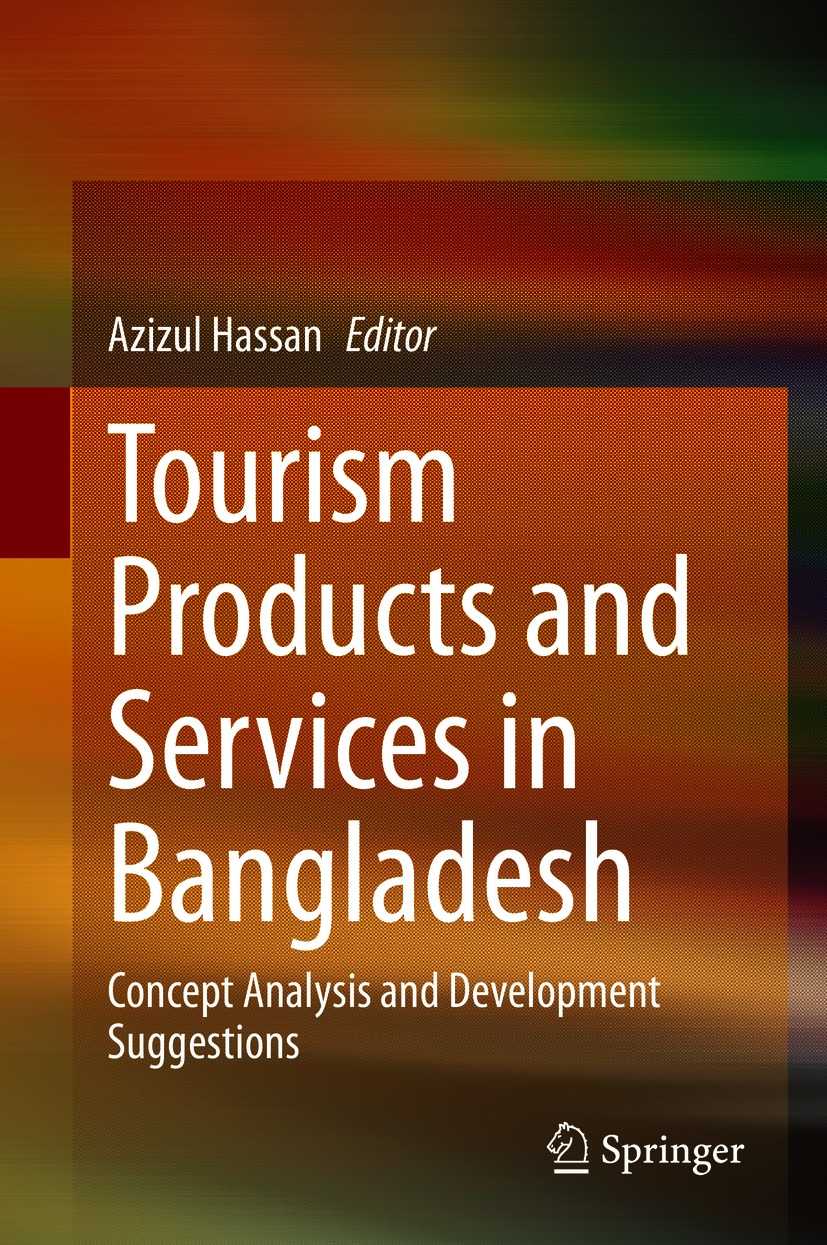Editor
Azizul Hassan
Tourism Consultants Network, The Tourism Society, London, UK
ISBN 978-981-33-4278-1 e-ISBN 978-981-33-4279-8
https://doi.org/10.1007/978-981-33-4279-8
The Editor(s) (if applicable) and The Author(s), under exclusive license to Springer Nature Singapore Pte Ltd. 2021
This work is subject to copyright. All rights are solely and exclusively licensed by the Publisher, whether the whole or part of the material is concerned, specifically the rights of translation, reprinting, reuse of illustrations, recitation, broadcasting, reproduction on microfilms or in any other physical way, and transmission or information storage and retrieval, electronic adaptation, computer software, or by similar or dissimilar methodology now known or hereafter developed.
The use of general descriptive names, registered names, trademarks, service marks, etc. in this publication does not imply, even in the absence of a specific statement, that such names are exempt from the relevant protective laws and regulations and therefore free for general use.
The publisher, the authors and the editors are safe to assume that the advice and information in this book are believed to be true and accurate at the date of publication. Neither the publisher nor the authors or the editors give a warranty, expressed or implied, with respect to the material contained herein or for any errors or omissions that may have been made. The publisher remains neutral with regard to jurisdictional claims in published maps and institutional affiliations.
This Springer imprint is published by the registered company Springer Nature Singapore Pte Ltd.
The registered company address is: 152 Beach Road, #21-01/04 Gateway East, Singapore 189721, Singapore
Introduction
Azizul Hassan
Conceptually, a tourism product is an object that attracts tourists and has some specific elements such as the tour, accommodation, attraction, entertainment, transportation, and dining. Moreover, a tourism product can also be considered as a package or bundle of both tangible and intangible elements of a destination. In addition, this can be tangible as physical objects such as theatres, accommodations, and various sites and can be intangible as booking or reservation of these tangible products.
A tourism product combines tangible and intangible elements such as attractions, cultural, natural and artificial resources, facilities, services, and activities. This can be attached to the marketing mix and can generate a visitor experience. It can be labeled as the combination of services, activities, and benefits that combine the comprehensive tourism experience. Such a bundle as a tourism product primarily comes with five components such as accessibility, destination attractions, destination facilities, images, and price. Due to the increase of the tourist industry, a tourism product needs to be adequately researched from different angles. So far, a limited number of research studies are conducted. Some notable studies of them are discussed in the following paragraphs.
According to Xu (2010), as the tourism industry has increasingly developed, the idea of the tourist product has become ingrained in the minds of industry professionals. Thus, following Benur and Bramwell (2015), the diversification, intensification, and interconnection of these products may be crucial for the competitiveness and sustainable development of destinations. Benur and Bramwell (2015) develop two conceptual frameworks that help analyze and understand the characteristics, relationships, and strategic options associated with the development, concentration, diversification, and intensification of tourism products in destinations. According to Benur and Bramwell (2015), the formation of mass and niche tourism products, integrative and parallel diversification, and spatial and thematic synergies between products need to include the tourism product features and options. A typology of strategic options for creating and assembling tourism products at destinations based on the degree of intensification and concentration and diversification of tourism products is presented by them.
Thus, in an attempt to bring some order to the overwhelming array of available tourism products, McKercher (2016) proposes a seven-tiered taxonomy of tourism items. With a modified version of the marketing-oriented product hierarchy scheme, McKercher (2016) adopts a phenetic approach to group products hierarchically based on five need families such as pleasure, personal quest, human endeavor, nature, and business.
From the marketing context of tourism as a product, Tan et al. (2018) argue that a modern advertisement framework has evolved with the improvement of mobile devices and the advent of social networking sites. However, the marketing of tourism products has historically been limited to conventional advertising methods. These researchers believe that social networking sites on mobile devices to promote tourism goods and services refer to mobile social media ads. Thus, many tourism organizations are suspicious, particularly if tourists are prepared to embrace this new type of publicity. Tan et al. (2018), therefore, propose an integrated system consisting of the mobile technology acceptance model, personal factors (i.e., mobile self-efficacy and self-efficacy of technology), and interactivity theory to understand the intention of consumers to receive tourism-related ads by implementing mobile social media advertising.
Similarly, research findings of Yu et al. (2019) can be useful when designing tourist items for online auction strategies. These researchers use three field experiments to examine the effect of relative and reference thought on customer bidding behavior in online tourism auctions of bed-and-breakfast (B&B) accommodations. Results of these research studies can support future researchers to better understand a tourism product.
On the other side, tourism service is relatively more researched than others (i.e., tourism products). Tourism services mean any service provided to tourists, including hotel and restaurant services (including catering), travel agents and tour operators, tourist guides, and other associated services. More specifically, tourism services cover almost everything from reservations, travel and accommodation arrangements, catering the food at restaurants in the destinations, visa/entry requirements application, vaccination and diet requirements advisory, becoming a tour guide and/or tour leader, and eventually ensuring that everything goes smoothly. The cross-border movement of customers is one of the most important aspects of foreign tourism. This helps even unqualified workers to become service exporters in remote areas, for example, by selling handmade products, participating in cultural shows, or working in a tourist lodge. Tourism service research also covers some distinct areas in some mentionable studies.
Tomej and Xiang (2020) argue that the idea of affordance, which captures the relationships between ones abilities and ones environments resources, will help to connect the components of a tourism service with the experiences of the intended service. In ecological psychology and design analysis, we begin with a general examination of its conceptual basis and then expand on the possible applications of the term in the context of tourism service design. The case study that examined a tourist group with and without visual impairment on holiday toward an international destination illustrates the implementation of an affordance-centered system. Finally, we propose four suggestions to direct the use of the idea of affordance in the design of the tourism service.

